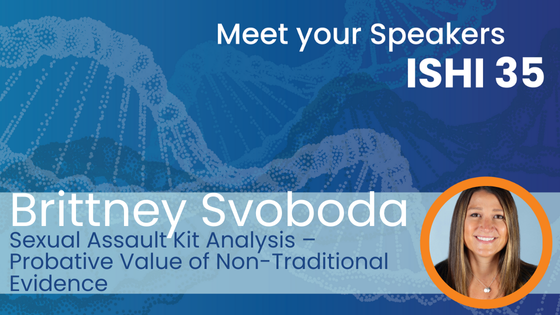The purpose of this study is to investigate the probative value of collecting and testing samples outside traditional cavity swabs from the victim’s oral, vaginal (penile), and rectal areas in sexual assault collection kits. Swabs collected from various areas of the victim’s body, such as inner thighs and breasts, can yield quality DNA profiles that are often better than the profiles from cavity swabs. In this study, we refer to these swabs from various areas of the victim’s body as “dried stain swabs” and the swabs from the victim’s cavities as “OVRs”. Sexual assault evidence can be daunting, time consuming, and a bottleneck regarding DNA analysis. Some laboratories have implemented protocols to streamline processing of sexual assault evidence that calls for the testing of OVRs over dried stains to prevent backlog. However, this method leaves potentially probative samples untested. Our laboratory currently prioritizes “intimate samples” when selecting items from a sexual assault kit to carry forward for DNA analysis. These intimate samples could be OVRs, dried stains from covered areas of the victim’s body, and even the victim’s underpants. A review of sexual assault cases was done to determine the importance of evidence submitted outside traditional cavity swabs. All samples were processed using Promega technology, including extraction with DNA IQTM on Maxwell®16 or Maxwell®48, quantification with PowerQuant®, and amplification with PowerPlex® Fusion. Profiles developed from OVRs, dried stains and victim’s underpants were evaluated to determine if DNA foreign to the victim was present and if there was enough foreign DNA to use for comparisons. Our review showed dried stain samples yielded the most usable profiles when compared to OVRs and underpants. Of the cases where dried stains were submitted, 78% of those cases yielded usable profiles from the dried stain samples. Only 48% of the cases where OVRs were submitted produced usable profiles. Furthermore, 49% of all the CODIS profiles entered from the kits evaluated came from dried stains alone. This study gives compelling evidence that testing samples outside of cavity swabs is beneficial when processing sexual assault collection kits.
Brittney Svoboda will present on the above study at ISHI this September.

Can you give us a sneak peek into the main theme of your presentation and why it’s important for our audience?
We evaluated past sexual assault cases to determine which types of samples yield the best quality profiles, for CODIS purposes, but also in general.
What inspired you to explore the topic of your presentation?
We used to focus so much on the presence/absence of seminal material. More recently we have developed better profiles from various areas on the victim’s body that the suspect encountered. So even in cases where we couldn’t identify seminal material, we are able to develop quality, CODIS eligible profiles.
How do you hope your presentation will impact the audience or industry?
Hope it helps guide analysts when processing sexual assault evidence and selecting which items to test.
When you’re not working, what’s your favorite way to unwind or relax?
Go for a run
What’s the best piece of advice you’ve ever received?
Don’t stress over things you cannot change
If you could only eat one dish for the rest of your life, what would it be?
Chicken alfredo
What were you doing in 1989, when ISHI first started?
I was born in 1989
Can you share a memorable moment from ISHI that has stayed with you?
This is my first year attending!

